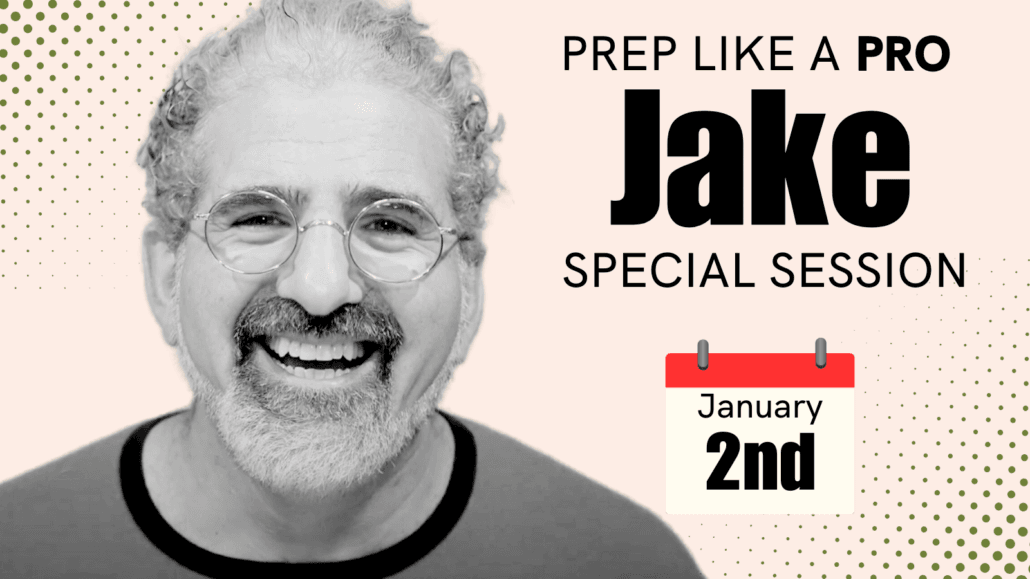[spb_text_block pb_margin_bottom=”no” pb_border_bottom=”no” width=”1/1″ el_position=”first last”]
What’s The Worst Thing That Can Happen?: Blue Ruin, The Bourne Ultimatum & Alien
By Jacob Krueger
[/spb_text_block] [divider type=”thin” text=”Go to top” full_width=”no” width=”1/1″ el_position=”first last”] [blank_spacer height=”30px” width=”1/1″ el_position=”first last”] [spb_text_block pb_margin_bottom=”no” pb_border_bottom=”no” width=”1/1″ el_position=”first last”]
TRANSCRIPT OF PODCAST
Hello, I’m Jacob Krueger and this is my Write Your Screenplay podcast. On this podcast each installment we’re going to be looking at a movie, and exploring what you can learn from it as a screenwriter.
Rather than looking at movies like critics, we’re going to be looking at them as screenwriters, avoiding the urge to give a thumbs up or a thumbs down response, and instead focusing on how screenwriters can benefit from studying these films, no matter how perfect or how flawed. We are going to look at good movies, we’re going to look at bad movies, we’re going to look at movies that are a mess, we’re going to look at movies that are perfectly executed.
We’re going to look at big genre movies and we’re going to look at the tiniest little indie films. We’re going to look at what makes them work and what makes them not work, how they’re built and what you can learn from them as a writer.
This episode, we’re going to be looking at Blue Ruin.
Blue Ruin‘s a nice little indie film by Jeremy Saulnier. For those of you who haven’t seen it, the main character, Dwight, is a deeply troubled man who became homeless after the brutal murder of his parents.
At the beginning of the film, a police officer informs Dwight that his parents’ murderer is being released from prison, and he decides to go get revenge, to murder the person who’s murdered his parents, and in that way to get the justice that was denied to him. Now this murderer’s actually part of a big ol’ nasty white trash family, and they’re all criminals and they’re all violent and they’re all terrible. And no sooner has Dwight killed this man than he realizes that he has started a war, that these people are now going to come after his remaining family, his sister, her children, and that they’re not going to stop.
He also learns a shocking surprise, and if you haven’t seen the movie this is a little bit of a spoiler: the person he killed is not actually the man who killed his father. It was actually that man’s father (we’ll call him Grandpa) who committed the murder for which his son took the blame. Grandpa has since died from old age. Which means that our protagonist not only exacted his revenge on the wrong man, but also can never have the justice he seeks. So now Dwight has set off this horrible escalating war that he cannot get out of, by killing a person who had nothing to do with his father’s murder.
What’s interesting about this movie from a screenwriting perspective is that Dwight does not arc in the traditional way that screenplay characters arc. He doesn’t change in the way that traditionally screenplay characters change. In fact, primarily this movie is built around plot, and not around what we would generally consider structure. And yet, it is a quite enjoyable movie and it works.
Now would it have been stronger if he had gone through a change? Probably. Would there have been more of a feeling of journey and compassion and empathy? Absolutely. But this is a great example of a very important principle in writing:
When in doubt, make it hard.
The reason this screenplay works, despite the lack of a traditional journey for the main character, is that Dwight’s goal is clear as day. It is unavoidably clear. All Dwight wants is to avenge his parents’ murder, and once that revenge is complete, all he wants is to stop the escalation, to protect his sister.
And because these wants are so clear and so hard, we’re sucked into his journey even though he’s not really changing as a character. Now what do I mean when I say he’s not really changing as a character? When we meet this character, he is in a down and out state. He is estranged from his family, he is alone in the world, his life is meaningless, and the only thing that matters is his feeling of himself as a victim.
As soon as he finds out that his parents’ killer has been released from prison, he immediately decides to exact his revenge. So when we meet him, he is already a character who is willing to go to extremes to avenge his parents’ death. And throughout the movie he goes to increasingly extreme extremes in order to avenge his parents’ death and protect his sister.
This is kind of the same structure that you’d see in an older movie like Alien, where the main character’s not actually changing, but there’s a frickin’ alien on the spaceship and she is going to do everything that she can do to survive. So what we’re looking at here is a character who doesn’t change, who is expanded but does not change. But every step along the journey feels like movement for the main character because it is so hard. He’s got no money; he can’t even buy a gun so he has to kill the guy with a knife. He has no training, he has no experience, he screws up again and again and again. He doesn’t see the bad things about to happen and ultimately he tries to get out of it but can’t, because the people that he’s fighting are not going to stop until they get their revenge too.
The reason that this movie works is because the constant escalation, the constant twists and turns. He thinks he has avenged his parents’ death only to find out that he’s killed the wrong person. Terrible people come to his sister’s house to kill her and her children. He ends up having to fight them, kidnapping one of them, and then he almost gets killed by that guy and then he needs to be rescued by his friend. There’s this constant escalation of the problem that this main character is having.
So if you want to learn one thing from this movie, find something your character wants and make it really hard to get.
What’s beautiful about this approach is you can screw up a lot of other stuff along the way as long as you do this one thing. Find something your character wants more than anything in the world and make it really hard to get, and much of the rest of the movie will take care of itself, even if you don’t follow the traditional rules.
The next element that makes this movie work, despite its lack of traditional structure, is that the stakes are life and death. The threat is so strong that we can feel for this character even though he’s not changing. We can feel the terror. We can feel the corner that he’s been backed into. They are literally going to kill him, and at every turn the worst possible thing happens to him.
During the original murder, the original revenge murder, he cuts his hand deeply. He gets into his car and he doesn’t have the key. He then has to steal the antagonist’s limousine but he’s already poked a hole in the tires. There’s a kid in the limousine that he’s not expecting. He gets shot with an arrow. The worst things keep happening to him.
And this is the question you want to ask yourself when you’re writing a movie is: What’s the worst thing that can happen? What’s even worse than that, and how can it happen? What’s the most ironic thing that can happen and how can it happen?
These are tricks, but when you use these tricks, what ends up happening is your audience ends up getting sucked into your story even if you don’t have the traditional character journey that most movies are built around. That doesn’t mean the movie wouldn’t be better with a change, but it means that if you hit these primary elements, a character with a tremendous want and a series of increasingly huge obstacle that make it harder and harder and harder, you can get away with this kind of writing.
For an example of this you can look at the Jason Bourne movies. If you look at the first Jason Bourne movie, The Bourne Identity, that character actually goes on a huge journey, a profound change. When we first meet Jason Bourne, he doesn’t even know who he is. Over the course of the movie he has to figure it out. Is he a good guy? Is he a bad guy? Who did this to him? And what has he done? He has to change, to come to grips with the fact that he might not be the person that he wants to be. He might not be the good guy, and that’s a huge change for that character in the first movie. The Bourne Identity is an example of a screenplay uses both the structure of the character’s want against increasingly large obstacle, and the structure of the character’s change as he confronts those obstacles, to allow the audience to empathize and connect. And that’s why The Bourne Identity actually ended up spawning a franchise. That’s why it was such a powerful movie for us to watch.
We can compare that to The Bourne Ultimatum, the third Jason Bourne movie. When that movie starts, Jason Bourne already knows who he is. He already knows who did it to him. He already knows why they did it to him. And really the only journey, if you boil it down just to its simplest elements, is that Jason Bourne goes back to Washington to yell at an old man. That’s actually the only thing that he does in that journey!
But the movie works for the same reason that Blue Ruin works. It works because it is so darn hard for Jason Bourne to get back to Washington, because there are so many obstacles in his path that it creates the feeling of journey even if no real journey exists, even if no real change exists, even if you’re primarily focusing on plot.
So I’m not suggesting that you should ultimately focus on plot. If you look at the first Jason Bourne movie versus the third Jason Bourne movie I think you’ll see that the first movie is much stronger than the third one. I’m suggesting that if you keep your focus on making it hard for your character, figuring out what your character wants and making it really hard, letting the worst possible thing happen, and forcing your character to power through that terrible obstacle, that you’re probably going to end up with a really compelling story.
This is what we’re talking about when we discuss organic structure in our screenwriting classes here at Jacob Krueger Studio: the ways that rather than trying to build a plot in advance and them jam a character’s structure into a predetermined outline, you can build plot and structure at the same time, following your instincts as a writer, and the wants and obstacles your characters, to create the most powerful story possible.
Sometimes that’s about building organically from the beginning, and sometimes that’s about looking at the plot based structure you’ve already created and asking questions that push the structure farther, by connecting to what’s really going on for your character, and seeking the opportunities to push them to places they have not yet gone.
For a character like Dwight in Blue Ruin, you could ask: Is there a moment where he feels powerful since he always feels weak? Is there a moment where he enjoys killing? Is there a moment where he tries to give up on his quest, where he stops wanting revenge? Is there a moment where he regrets the revenge? Does the revenge bring him closer to his sister? Does it push him further away from his sister? Is there a moment where he reaches an understanding with the people who killed his parents? Is there a moment where he’s able to see the world through their eyes, and not just see them as bad and himself as good?
You could ask yourself these in questions in order to create a richer journey, richer movements, and to look more profoundly at the question of revenge, and what does it do to a person. These are the kinds of questions that make a good movie, like Blue Ruin, into a great movie.
Now there are a couple other reasons why Blue Ruin works that are also worth noting.
The first is the characters are spot on. The characters are so well executed and so well-written. There is an economy of language by which every line is doing real work in the script. And every character has a unique entrance, a unique vignette that captures who they are as a person from the moment they first appear.
I’m not just talking about the main characters like Dwight. I’m not just talking about characters like the Cleland family, like the Cleland brothers, the bad guys that he’s hunting down. I’m talking about even little throw-away characters like the cop who first gives him the news that his parents’ killer has been released from prison.
Normally this would be a throw-away character. We’ve seen that stereotypical police officer a million times. But this officer is something special. She is sympathetic, she’s empathetic in a way to this homeless man that we don’t expect. In fact she’s trying to protect him, it’s so clear that she has a soft spot in her heart for him, and it’s done totally efficiently. We don’t get any backstory, any exposition from her about their relationship. She’s just acting out her want, which is to protect this guy from this information. And it turns her into a human being rather than a stereotypical cop.
The sister too has wonderful vignettes that introduce her, and let us understand who she is. When she first shows up, there’s this beautiful moment: Dwight tells her that he’s murdered the guy who went to prison (who, at this point, they both think is the person responsible for their father’s death) and the first thing she says is she’s glad he’s dead. You can see that there’s real hatred there, and that she feels exactly like her brother.
But then here’s what’s so interesting: Once they realize that the Cleland family is coming for her children, she totally turns on her brother, and starts accusing him, rejecting him, blaming him acting like he has made the most horrible decision ever. She does a total 180 as a character. Of course this is about her desire to protect her children and it’s about the deep-seated issues between them. As an audience, we don’t even need to know what those issues may be, and the writer doesn’t waste any time explaining them to us. What’s so great is that it doesn’t need to be explained. We understand that character’s emotional complexity at that moment, that both things are true. She did want them dead, but she didn’t see the implications. Just like Dwight, she never saw it coming. These people are not prepared to be the avengers.
Even the baddies, even the bad guys, have fabulous characterization. They’re complex characters, they’re not just natural bad people. So there are couple things that are working here, despite the lack of a traditional arc. The first thing is this writer makes it hard, then makes it harder, then makes it harder than that, allowing the worst thing to happen at every moment.
The second thing is fantastic characterization, fantastic dialogue, a sparcity, a lack of exposition, a real use of the muscle of each line of dialogue in the script. When you build a script primarily based on plot it becomes harder for you as a writer. This script works because the writer’s craft is just so darn good, that he gets away with creating the feeling of a journey without actually creating a change for his character.
It’s rare to find a writer who can pull this off. And so one of the things you want to think about, even as you use these tricks, even as you watch a movie like this where the characters don’t really go on a journey but the writer uses craft in order to fill that hole, is that if you’re going to rely on craft alone, craft takes a tremendous amount of time to build. So if you’re going to rely on craft alone, you’ve got to do things absolutely perfectly. You have to have the same level of craft as the writer of Blue Ruin. You have to have that level of dexterity and skill as a writer, and that stuff takes time.
You cannot build craft quickly, because it only comes with practice. If you were picking up the violin for the first time, you wouldn’t expect to be able to play Carnegie Hall for your first performance. It takes time to build that craft. It takes repetition. It takes writing and writing and writing. It takes learning. It takes reading lots of scripts. So craft is slow to build whereas art is quick to build.
All of us can tap into the feeling of what it is to change as a character, because all of us want to change as people.
We all have things that we wish were different. And because we can all tap into that desire to change, when you write your character based around a change rather than based around a plot, you’ll notice that the character starts to do more of the heavy lifting for you, that you can get away with making more mistakes because you have that underlying human structure, that underlying human drama that we can all tap into.
Most of us will never be faced with a bunch of people who are trying to kill us and our family, but all of us can tap into that need for revenge. And all of us can tap into a journey that would shape us, that would change us, that would change the way we look at revenge. And so when you allow your character not only to want something that is very hard to get but also to change in the process of trying to get it you can get away with a lot more mistakes. You can get away with being a beginning writer.
Thank you for listening to this podcast! If you would like to learn more about an organic approach to writing, I invite you to check out our screenwriting classes in NYC and Online, our ProTrack one-on-one mentorship program, and our international retreats. And if you enjoyed this podcast, please share it with your friends!
[/spb_text_block]



